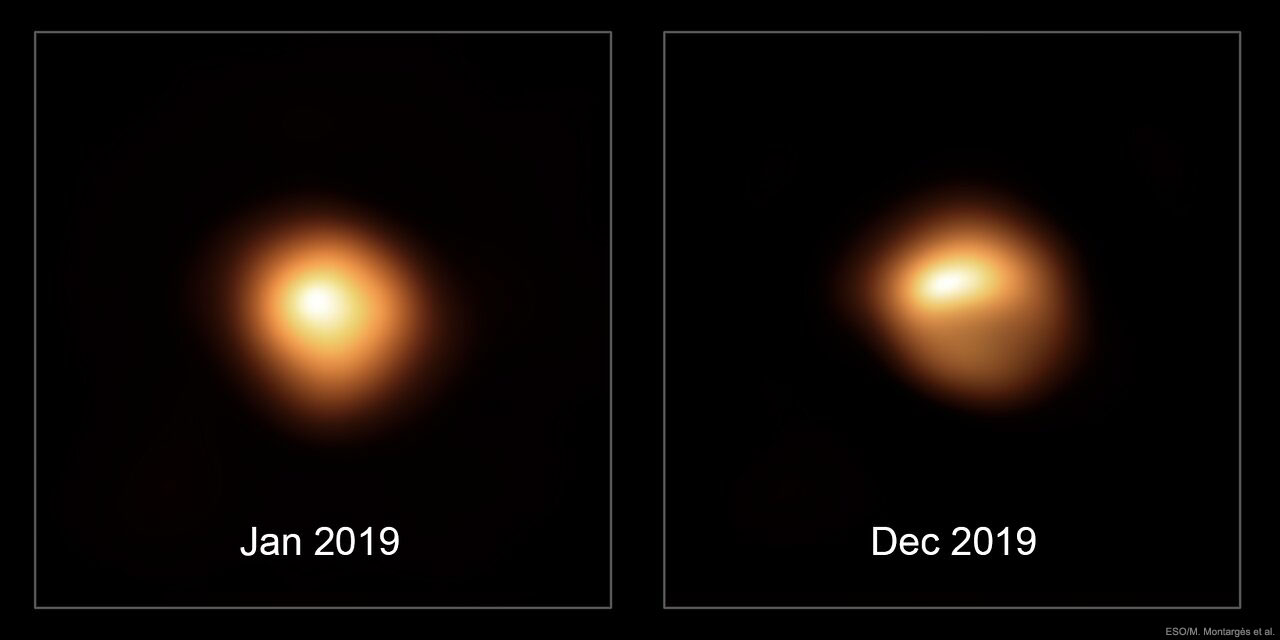2020 February 17
The Changing Surface of Fading Betelgeuse
Image Credit: ESO, M. Montargès et al.
Explanation: Besides fading, is Betelgeuse changing its appearance? Yes. The famous red supergiant star in the familiar constellation of Orion is so large that telescopes on Earth can actually resolve its surface — although just barely. The two featured images taken with the European Southern Observatory’s Very Large Telescope show how the star’s surface appeared during the beginning and end of last year. The earlier image shows Betelgeuse having a much more uniform brightness than the later one, while the lower half of Betelgeuse became significantly dimmer than the top. Now during the first five months of 2019 amateur observations show Betelgeuse actually got slightly brighter, while in the last five months the star dimmed dramatically. Such variability is likely just normal behavior for this famously variable supergiant, but the recent dimming has rekindled discussion on how long it may be before Betelgeuse does go supernova. Since Betelgeuse is about 700 light years away, its eventual supernova — probably thousands of years in the future — will likely be an amazing night-sky spectacle, but will not endanger life on Earth.
变暗中的参宿四的表面
影像来源:ESO, M. Montargès et al.
说明:除了正在变暗以外,参宿四的外观也有改变么?是的。位于大家所熟知的猎户座的这颗著名的红超巨星巨大到地面上的望远镜都能够分辨出它的视面——尽管是勉勉强强。这两张照片是由欧洲南方天文台的甚大望远镜分别于去年年初和年底拍摄的,反映出参宿四表面的变化。较早的照片显示出参宿四表面的亮度分布比后来要均匀得多,在年末的照片中,参宿四的下半部明显比上方暗淡。在2019年的前5个月,业余观测表明参宿四实际上略微增亮了,但在最后5个月则迅速变暗。这种变化对于这颗著名的超巨星变星而言似乎也是正常的,但近期的这次变暗确实再次引发了参宿四还有多久会变成一颗超新星的讨论。因为参宿四位于700光年之外,当它最终成为超新星时——估计在几万年之后——夜空中将出现一道奇景,但这并不会对地球上的生命造成威胁。








离我们这么遥远恐怕早就不存在了
如果它发生超新星爆发,形成的光辉应该能持续几年吧。